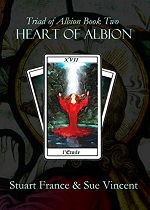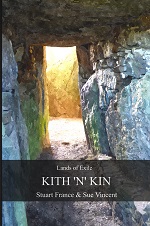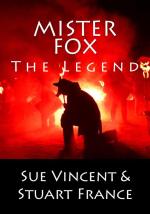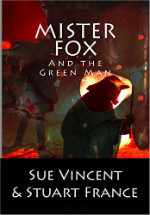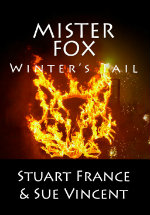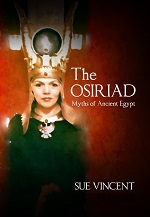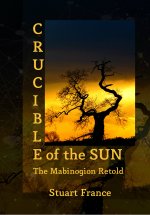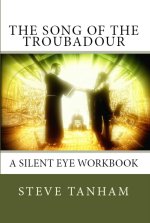Continuing Gary Stocker’s Sunday series of posts on the folklore, ancient sites and legends of Britain. If you have similar stories to share from the area in which you live, please read the footnote and send them in.

The steward reading out what is owed
Obviously November 11th is quite rightly famous as Remembrance Day. However it is also St Martin’s Day. In Warwickshire there is the annual Wroth Silver Ceremony just before sunrise on Knightlow Hill in Stretton-on-Dunsmore on this date (11th November, or the preceding Saturday if it falls on a Sunday). It is arguably the oldest continuing ceremony of its kind in Great Britain, thought to date back to Saxon or even ancient British times. There were other similar ceremonies in Britain, but they have discontinued. The earliest known reference to it was in 1170 and it was mentioned as, “ongoing”. The Feast Day of St Martin of Tours, known as Old Hallowe’en since the calendar change of 1752, was when autumn wheat seeding was completed and the slaughter of cattle for “Martinmas beef” was done. It is associated with end of year celebrations. One legend holds that St Martin was martyred with a mill wheel, so it became bad luck to turn a wheel of any kind on that day, which is a bit unfortunate, because most of us arrived by car. It became a time when tenancies were renewed, rents paid and labourers engaged. Money owed had to be paid by St Martin’s Day. Which is why the ceremony is done before sunrise. In past times a particular day did not become that, until sunrise. So until sunrise, under the old system, it was still St Martin’s Eve. It only became St Martin’s Day after sunrise. The legal requirement to hold it stopped in 1800. After fifteen years though, it was decided to start doing it again as a ceremony, rather than a legal requirement.

The Mayor of Rugby reading out a speech
A couple of weeks beforehand, the Rugby Advertiser announces that the ceremony is going to take place. Although attending the ceremony is free, the breakfast afterwards requires buying tickets from the hostelry hosting it. This used to be the Dun Cow pub, which dated back to the eighteenth century, but in recent years it has been held at various nearby venues, as the Dun Cow is now derelict following a fire. The last few years it has been the Queen’s Head in nearby Bretford. A lot of us met there at about 6 am for refreshments, including the traditional rum and hot milk. Then it was off to the ceremony. We all parked nearby and went to the field where Wroth Silver stone is. It is by the A45 London Road. It is on a public footpath, according to the Ordnance Survey map, so it can be looked at pretty much anytime. His Grace the Duke of Buccleuch has stewardship of the ceremony. Formerly it was the Crown, but Charles I transferred it to one of the Duke’s ancestors. This was contested in the reign of Charles II, but the court ruled in favour of the Duke’s ancestor.

Inside of Wroth Silver stone after cleaning, but before money has been deposited.
The stone has been cleaned out and covered by a blue plastic sheet. When the ceremony was due to start, the sheet was removed, the Duke’s steward faced east and read out various parish names which make up Knightlow Hundred (a hundred was a local government district in past times) and how much that parish owed. A representative from that parish then threw in the correct amount into the Wroth Stone, saying, “Wroth Silver” as they did it. In former centuries the representative had to go three times around the mound before doing it, but that stopped about two centuries ago.

The traditional clay pipe
Failure to pay meant either a fine of either twenty shillings for every penny not paid, or forfeiting a white bull, with red nose and ears of the same colour, bulls of that description being descendants of the indigenous cattle of ancient Britain. Another Warwickshire legend is that of the Dun Cow (there are a few pubs named after her), which may have been based on one of these cattle. They were quite ferocious compared to modern day domestic cattle. My parish owed a halfpenny, so I chucked in more than enough! I did not notice any parish not paying; if there was nobody else from that parish, someone else threw in. The Wroth Stone itself is the remains of an old wayside cross, destroyed a few centuries ago. The grade two listed base is still there and that is where the money is deposited. The stone itself is on top of a tumulus, which is probably the grave of an important person. Most likely from Saxon times, although some say that either an ancient British chieftain or a Roman general. In the eighteenth century there were four fir trees at each corner, said to represent four knights who were slain nearby.

A mention of the ceremony on the back of the Daily Mail, 12th November 1918
Once dawn had broken, it was back to the Queen’s Head for breakfast and speeches. We all got our breakfasts and traditional hot milk and rum to toast the speeches. The Mayor of Rugby, the Duke’s steward and various other notables made the speeches. The official poet also read a poem out about the ceremony and someone else gave a talk on it. There was also a booklet for sale, called, “Wroth Silver Today” by William Waddilove and David Eadon. Each of us was given a hand made, clay half churchwarden pipe. It was traditional to smoke those afterwards. You can still do it, but you have to go outside.
So what is the purpose of the ceremony? There are various ideas. Some say that it might be feudal. For instance Ward money, in lieu of military service. People have tried to find the answer by looking at the etymology of the word. The trouble is that spelling was rather casual in years gone past. Although the consensus is that the spelling was Anglo Saxon. A prevailing idea is that the area was largely covered by the Forest of Arden (now largely gone, but existing and being replanted in places). Apart from the occasional surviving Roman road, like the nearby Fosse Way, moving livestock around was difficult. So the Wroth Silver was paid as a sort of protection and right of way tax.
Anyone can attend. You do not have to be a resident of the hundred. It is just by coincidence that I am. If you are a first time attender, you are a colt if you are male and a filly if you are female. There was a good number of people attending this year. The lowest in living memory was six, during World War II, which was understandable, but the fact that they did it proves that you cannot keep a good ceremony down!
Sources: “Tales of Old Warwickshire” by Betty Smith, pages 101 – 103
“Folklore in Shakespeare Land” by J Harvey Bloom, page 161
http://www.wrothsilver.org.uk/
About the author
Gary Stocker graduated from Coventry Polytechnic in 1991 with a degree in combined engineering. He worked in civil engineering for nearly twenty years. For the last six years he has worked in materials science and currently works as a test engineer. His hobbies and interests include voluntary work, conservation work and blacksmithing. He is also interested in history, mythology and folklore and he says, “most things”.

 How did your granny predict the weather? What did your great uncle Albert tell you about the little green men he saw in the woods that night? What strange creature stalks the woods in your area?
How did your granny predict the weather? What did your great uncle Albert tell you about the little green men he saw in the woods that night? What strange creature stalks the woods in your area?
So many of these old stories are slipping away for want of being recorded. legendary creatures, odd bits of folklore, folk remedies and charms, and all the old stories that brought our landscape to life…
Tell me a story, share memories of the old ways that are being forgotten, share the folklore of your home. I am not looking for fiction with this feature, but for genuine bits of folklore, old wives tales, folk magic and local legends. Why not share what you know and preserve it for the future?
Email me at findme@scvincent.com and put ‘Living Lore’ in the subject line. All I need is your article, bio and links, along with any of your own images you would like me to include and I’ll do the rest.







